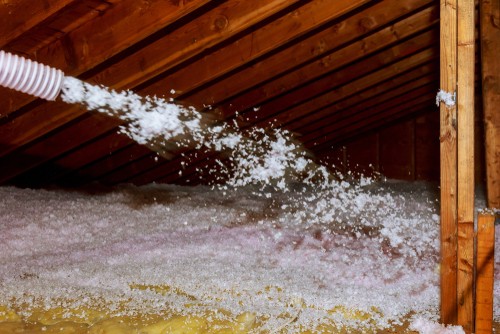Is your home too hot in the summer even though your AC is cranking? Does your home feel drafty in the winter? It could be that your home insulation needs to be replaced or is missing.
Insulation Tips for Your Home
Blanket
Blanket insulation can come in batts and rolls. Blanket insulation is made from a combination of fiberglass, plastic fibers and natural fibers. It is best suited for unfinished walls, including foundation, basement and crawlspace walls, floors and ceilings.
Foam Board or Rigid Foam
This type of insulation made from polystyrene, polyisocyanurate or polyurethane. It works best for exterior continuous insulation and exterior below grade foundation walls. It can also be used for unvented low-slope roofs, floors, ceilings and unfinished walls including foundation, basement and crawlspace walls.
Loose-Fill and Blow-In
A cellulose product made with fiberglass and mineral best for enclosed existing walls or open new wall cavities. Because of the method of application it is a great option for hard-to-reach places and unfinished attic floors.
Fiber Insulation
This product is rated to withstand high temperatures and best in ducts with unconditioned spaces.
Spray Foam
Insulation applied using a sprayer into small or large spaces. It is a great option for adding insulation to existing finished areas of the home and areas that may be difficult to insulate due to their irregular size or difficult location.
Best Insulation for Your House
Different insulation types work best in different areas of the home. Installation method, R-value, life cycle costs, and indoor air quality impacts can help determine the best choice for your home’s insulation needs.
Best Insulation for Your Attic
Loose-fill or batt insulation is the insulation most commonly found in an attic. Usually this is a larger space that require a large swath coverage, but this material can settle and shift making it less effective than when originally installed.
Fiberglass insulation is another option but can be difficult to install and fibers can separate making the attic susceptible to drafts.
Attics can be an odd shape and a breeding ground for mildew and mold. Spray foam because of its properties and the manner in which it is applied, offers the fullest coverage and protection against the elements.
Best Insulation for Exterior Walls
The best time to add insulation to your exterior walls is when you are making a repair, remodeling or if you are replacing existing siding. Blow-in insulation is a good choice for existing home exterior walls which will add energy efficiency and air sealing. Large remodeling projects that open up wall cavities can be best served by spray foam.
A contractor can also install injection foam insulation and blow-in insulation through a hole drilled into each stud cavity behind your home’s siding. It means the removal and then replacement of a row of siding.
Best Insulation for Crawl Space
A crawl space can serve as the perfect environment for mold and mildew growth if warm interior air comes in contact with cold exterior walls. This is a prime spot for spray foam insulation which will create an airtight seal while not being compromised by moisture.
What does R-Values mean?
R-Value is a unit of measurement for an insulation’s ability to resist heat traveling through it. R-Value goes from a low of R-30 which is acceptable for areas like the southern tip of Florida to R-60 for areas of the country such as Michigan and Maine. For the Maryland and Virginia area, Energy Star recommends an R value of 30 to 49.
You can use this Home Energy Saver calculator for recommendations on energy upgrades including insulation and their rate of return.
According to the U.S Department of Energy, foam insulation products and insulation have higher R-values and form an air barrier that can mitigate the costs of other weatherizing products such as caulking and taping joints.
Keeping your home’s energy from leaking out through gaps, and cracks can save you serious cash. A properly insulated home is one of the best ways to do that.
Failing or ill-fitting windows can also be energy thieves. Replacing your old windows with modern double-glazed windows can keep you from wasting your energy dollars. Thompson Creek Window Company can give you a free estimate to help you on your way to saving energy and money and our Hassle Free Warranty makes the decision stress-free.


